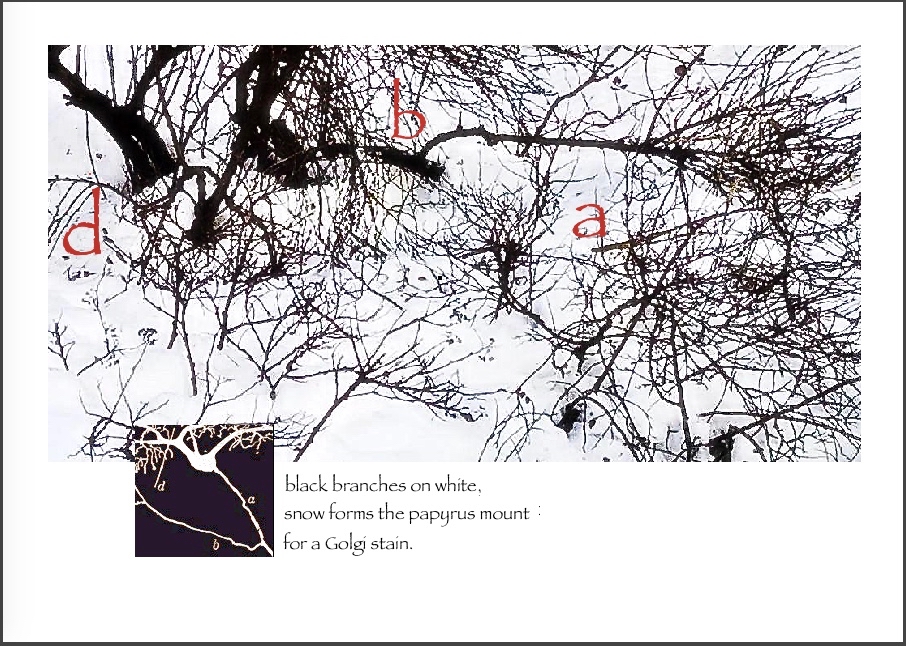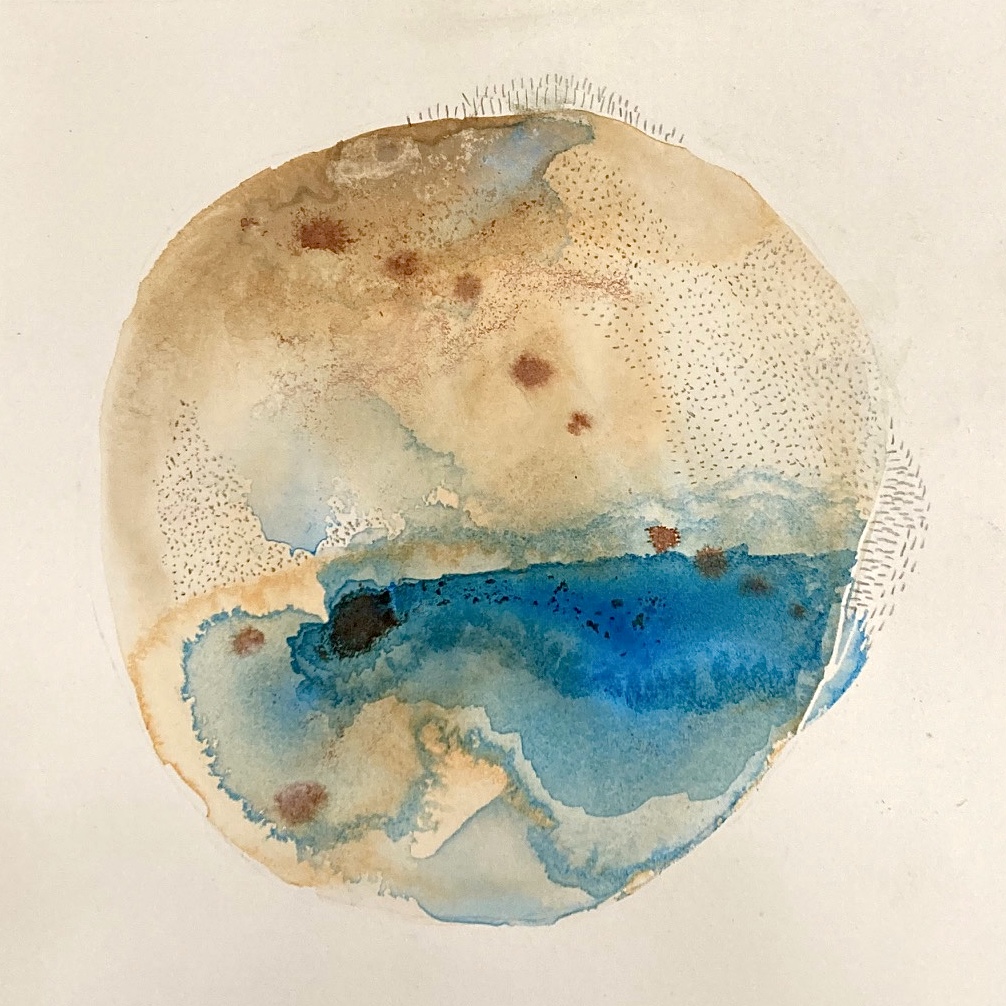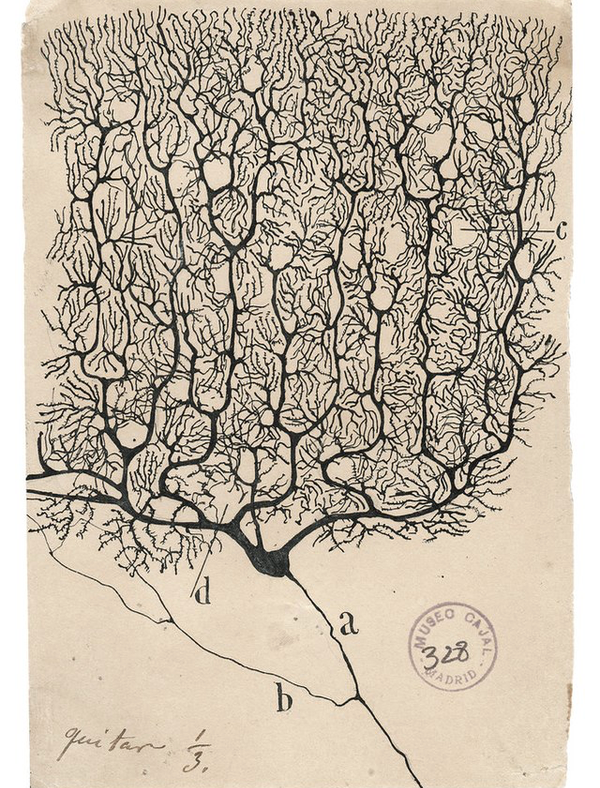
LIFE AS MYTH
![]()
JOURNAL
![]()
JOURNAL 2025
![]()
The Atlas
Our future world
![]()
JOURNAL 2025
![]()
LIFEWORKS
![]()
ATLAS
![]()

JOURNAL 2025
THE ATLAS
And don’t think the garden loses its ecstasy in winter. It’s quiet, but the roots are down there riotous.
RumiIt began during a winter walk on New York's Upper West Side. It had snowed heavily that week and I stopped to take a picture of barren branches on an embankment. A few days later, I decided to manipulate the photo with different filters before posting it on social media. By increasing the contrast and exposure, the architecture of the branches sharpened. Like the brush strokes in Japanese ink wash art.
Weeks later I read about a touring exhibition of Santiago Ramon y Cajal's drawings. Looking at his work I recalled the branching lines in my winter photograph. Both had patterns found in Nature, his in a world too small for the human eye to see, mine in a world that is around us all the time. And I returned to the photo with inspiration for a piece of artwork.
Cajal's drawings are a remarkable example of the seminal, creative, re-orienting significance of pictures in science. It is so easy to overlook the importance of visualization to thought and discovery.
Alva Noë, The Art Of The Brain, On Exhibit, Cosmos & Culture: Commentary On Science And Society, NPR (January 17, 2017)Cajal created a vast body of work showcasing the human neuron. To do that he studied brain tissue stained with a new technique developed by Camillo Golgi. The collaboration between the two men resulted in a shared Nobel Prize for Physiology and Medicine (1906). What makes Cajal's work truly exceptional is not his graceful drawings of brain cells. It's more than that. His art displays an understanding of how those cells actually work. In other words, when Cajal was drawing he discovered a truth beyond the stained tissues in front of him, beyond what his eyes alone revealed.
And that is the takeaway for me -- how Cajal's work places the neuron in the context of something larger. In his extraordinary drawings, there are no unrelated individual cells but rather the mystery of an entire neural network, whose roots and arms are universal, repeatedly appearing throughout the created world, even in a tangle of winter branches erupting from a bank of snow.
(adapted from a daily journal June 2018 - 2019)
Golgi haiku, Usher. 2018.
When da Vinci is a woman, i (2020).
The life of cells triptych, ii. Usher, 2022. Intima: A Journal of Narrative Medicine [Columbia University], Fall 2022.
Purkinje neuron from the human cerebellum. Santiago Ramón y Caja. 1901. Cajal Institute (CSIC), Madrid.
WHAT CAME AFTER. . . field researchers can focus on observing key events or incidents. Fieldworkers may at first have to rely on their own experience and intuition to select noteworthy incidents out of the flow of ongoing activity.
Writing Ethonographic Field Notes, Emerson et al.Prior to New York and a writing life, I relocated to New York City to attend graduate school at New York University in clinical counseling. It was my time at NYU and most particularly an independent study in the final year that proved to be a watershed for my life. The independent study focused on the connections between gender bias, narrative and the emergence of the Self. That study reshaped my identity as a woman and as an artist. It also produced a self-narrative paradigm. I named my work the Scheherazade Projectl, after the famous Arabian storyteller of the same name, who told stories to save not only her own life but the lives of other women.
In 2006 I graduated from NYU and around that time I launched this web site, then called The Scheherazade Project. The goal was to have a place that I could have a voice, explore the narrative work I began at NYU and, quite simply, begin my writing life. Over that first year, I wrote about the three prongs of the project's narrative philosophy: mythology of self, mythology of other and mythology of planet. The focus was on feminine values, community and harmony, as opposed to masculine values, individuation and conquest.
I was slow in finding my way and there were frequent rewrites, editing, misdirection. The web site has been rechristened and reimagined several times. But, looking back now, I realize that is part of the process of discovering and claiming your own voice. It is also part of the process of discovering and naming your own life.
(L) A view from a bench in Brooklyn while drinking coffee and eating a pumpernickel bagel. Usher, 2015.
He needs a cigarette. He pats his shirt pocket looking for his pack and, only then, he remembers why he is here in a Brooklyn coffee shop. He glances back up; he sees her for the first time (he had almost missed her altogether); it is possible that he falls in love with her right now. Usher, Autumn 2016.
Wilton diptych (detail). Artist unknown. 1395. The National Gallery, London.





